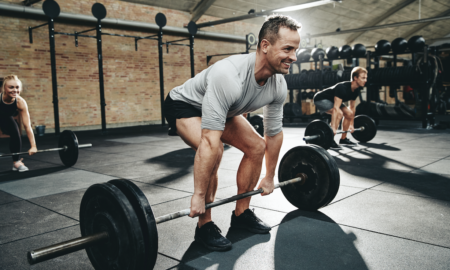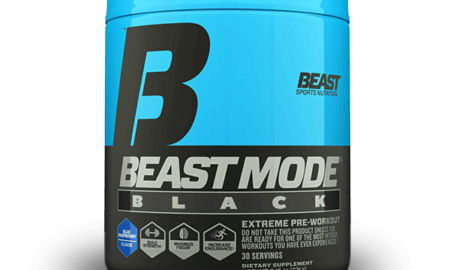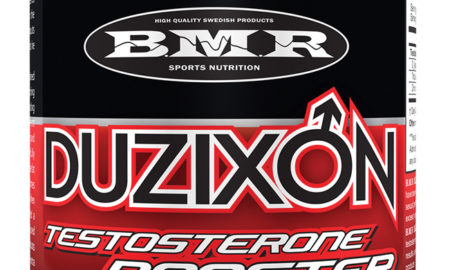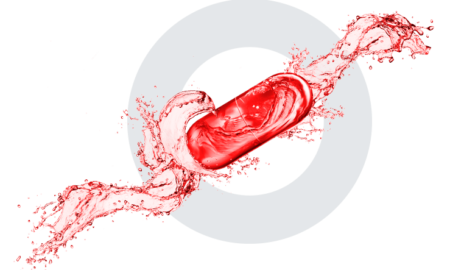Anabolic steroids fascinate both athletes and couch potatoes. Although they're most commonly associated with strength, power and bodybuilding competitions, disclosures during recent years make it clear that steroids have infiltrated nearly every sport. Even so, information on them is often confusing and contradictory. That's why you need clear answers to the most common questions about anabolic steroids.
Simply put, anabolic steroids are either testosterone itself or synthetic versions of testosterone that have been structurally manipulated to emphasize anabolic over androgenic effects.1 Anabolic refers to what you want to get out of steroids, such as increased muscle protein synthesis. Androgenic refers to testosterone's effects on prostate growth, male pattern baldness and acne'what you don't want to get from steroids.
Although a substance that controls 'maleness' had been postulated since ancient times, it wasn't until 1935 that German scientists actually synthesized testosterone. In the 1940s research on the many possible medical benefits looked at everything from treatment of catabolic illness to osteoporosis in women. The problem was, however, that it had to be provided in injectable form.
When taken orally, testosterone was rapidly degraded in the liver during a process called first-pass metabolism. To counteract that, steroid chemists developed oral forms of anabolic steroids that would resist it. Oral steroids, as well as improved injectable forms emphasizing anabolic over androgenic effects, first appeared during the late 1950s and early '60s. Nandrolone was one of those.
The term steroid often confuses both the media and the public. It refers to certain structural characteristics of a substance as well as to a substance that derives from cholesterol. Testosterone, estrogen, cortisol, pregnenolone, DHEA and aldosterone are all steroids, but only testosterone-based steroids are considered anabolic.
Anabolic steroids have different anabolic-to-androgenic ratios, as well as other features and different substance-conversion properties. Some anabolic steroids (AS) can convert into dihydrotestosterone (DHT) through the action of an enzyme called 5-alpha reductase. DHT is considered highly androgenic and induces such side effects as prostate enlargement, acne and male pattern baldness.
Other steroids don't convert into DHT but can convert into estrogen by way of another enzyme, aromatase'testosterone, for example. Increased estrogen in men leads to such side effects as gynecomastia, or male breasts, increased fat deposits under the skin, known as subcutaneous fat, and water retention.
To combat effects like that, athletes take drugs that block the enzymatic conversion of steroids.2 They include finasteride (Proscar, Propecia), which treats male pattern baldness and prostate enlargement, and either tamoxifen citrate (Nolvadex) or anastrozole (Arimidex) to lower estrogen synthesis and estrogen effects.
Despite the side effects of anabolic steroids, until recently, medical professionals denied that they had any true effects on muscular size and strength. Most gains were written off as simple water retention, but a landmark New England Journal of Medicine study published in 1996 firmly put such doubts to rest.3 The subjects were divided into control and exercise groups and got either a placebo or 600 milligrams of testosterone injections a week. The study showed unequivocally that steroids (in this case testosterone) significantly increase muscular size and strength, and it also confirmed the long-held notion that steroids work best when combined with weight training.
Steroids work by binding to specific cell receptors called androgen receptors. That initiates a cascade in the cell that results in upgraded muscle protein synthesis. Since androgen receptors are already saturated with normal testosterone levels, however, why would taking additional test, or its anabolic steroid derivatives, produce such dramatic results?
The answer lies in research showing that large doses of steroids, such as those commonly taken by athletes, increase the number of androgen receptors. The same thing happens during high-intensity weight training: Androgen cell receptors increase, making the process of building more muscle through increased muscle protein synthesis more efficient. That explains why combining anabolic steroid use with weight training produces more muscle than either alone.
Research also shows that the number of androgen receptors varies within muscles throughout the body. The most abundant androgen receptors exist naturally in the neck and shoulder, or deltoid, muscles, theoretically making them the most amenable to size increases. But since exercise itself'as well as anabolic steroids in larger doses than are commonly used for medical purposes'also increases the number of androgen receptors, that's a moot point.
Many athletes say that different steroid drugs exert varying anabolic effects. For example, testosterone injections are said to be best for increased muscular size and strength. How could that be if all anabolic steroids are based on testosterone? The answer here is the discovery of cellular protein coactivators that work in concert with the androgen receptor/steroid complex in the cell. It seems that different steroids activate different coactivators inside the cell, leading to differing anabolic effects. Although the findings are still new, researchers have identified at least six known androgen receptor coactivators thus far.4
ALLInteracting with the androgen receptors, however, isn't the only way that steroids increase muscular size and strength. Androgens bind with low affinity to glucocorticoid cell receptors, the cell receptors that interact with cortisol, an adrenal steroid. Cortisol is the primary catabolic hormone in the body, meaning that it promotes muscle breakdown. Anything that interferes with cortisol activity, such as anabolic steroids, would tilt the balance toward anabolism, not catabolism.
How much anabolic steroids contribute to the anticatabolic effect is a point of contention among scientists. Some point out that cortisol receptors in muscle far outnumber androgen receptors. So a true anticatabolic effect would require larger doses of anabolics. That explains the dose-response relationship often noted with anabolic steroids, meaning that significant muscle building occurs only with higher doses or multiple-steroid use. Athletes have known this for years, which is why many use various steroids in combination'a process known as stacking.
Scientists were confused for a long time about the anabolic effects of steroids because, for ethical reasons, early steroid studies typically used doses prescribed to treat illness. That didn't remotely resemble the doses used by athletes, however, and since androgen receptors are saturated at normal testosterone levels, drug doses meant to reach normal levels would have a minor anabolic effect in catabolic patients and no anticatabolic effects at all in healthy athletes. Thus study design forced scientists to conclude that 'steroids don't build muscle.'
Recent studies also confirm another route through which anabolic steroids increase muscle size: augmented release of other anabolic hormones in the body, such as growth hormone and insulinlike growth factor 1 (IGF-1). The primary anabolic hormones in the body appear to have a synergistic effect in building muscle. Bodybuilders, of course, found that out on their own, which explains the current popularity of anabolic stacks that feature testosterone, growth hormone and insulin. That stack is largely responsible for the current number of bodybuilders weighing more than 250 pounds in muscular shape. It's also responsible for the newfound proliferation of protruding guts, an aberration rarely seen before the advent of the superstack.
Still another mechanism whereby steroids promote increased gains involves the central nervous system. Recent studies confirm that steroids do promote activity in the brain's reward system. That leads to feelings of well-being, increased confidence and other positive mental effects. Steroids are also thought to promote neurotransmitter activity in the limbic system of the brain, which is linked to increased aggression, an effect the popular media terms 'roid rage.
The violent mood swings and increased aggression associated with testosterone are thought to explain why men are more aggressive than women. Even so, the 'roid rage theory poses several problems. For example, studies show that how a person reacts to increased androgens depends on existing personality factors; in other words, the increased-aggression hypothesis just gives some users of large steroid doses an excuse to act crazy. Most of them were crazy before they used steroids. Research shows that if anything, men with higher natural levels of testosterone tend to be calmer than others. The angriest men are those with the lowest testosterone levels.
Other recent studies show that men with low testosterone levels tend to be depressed, confirming that testosterone interacts with brain neurotransmitters that control mood. Testosterone may also protect the brain from the onset of degenerative diseases, such as Alzheimer's. Men low in testosterone have a greater tendency to develop Alzheimer's.
Another common observation concerning anabolic steroids is that athletes who use the drugs tend to show lower bodyfat levels than their nonuser counterparts. Steroids are known to decrease subcutaneous fat stores, which would increase apparent muscularity and vascularity.
Lower testosterone levels in men promote increased deposition of fat in the abdominal area, and some studies show that taking anabolic steroids selectively decreases abdominal fat. That's important because deep-lying abdominal, or visceral, fat is linked to the onset of cardiovascular disease and diabetes.
But what about the many health hazards linked to anabolic steroid use? As with any drug, the effects depend on individual responses, as well as how much and how long a steroid is taken. The larger the dose, and the longer the cycle, the higher the risk of side effects. The main problems linked to steroid use involve the cardiovascular system and the liver.
Most oral anabolic steroids promote the activity of a liver enzyme that rapidly degrades high-density lipoprotein (HDL), a cholesterol carrier in the blood that prevents cardiovascular disease. Drugs that aromatize, or convert into estrogen, like testosterone injections, don't adversely affect HDL levels, but the pro-hormone androgen supplement androstenedione both converts into estrogen and lowers HDL.
Steroids may also increase the activity of blood-clotting mechanisms that could lead to adverse cardiovascular consequences, such as a heart attack or stroke. On the other hand, steroids lower a dangerous blood protein called lipoprotein (a), which is connected to a greater incidence of cardiovascular disease.
Despite the cardiovascular dangers associated with steroid use, you rarely hear about bodybuilders and other steroid-using athletes dropping dead from heart attacks or strokes. The reason is that most bodybuilders don't have other risk factors for cardiovascular disease: They usually don't smoke, aren't obese and don't have high blood pressure. The aerobic exercise they do also offers protective effects, as do many of the commonly used food supplements, such as antioxidants. Drugs such as clenbuterol, pharmaceutical diuretics and thyroid hormones carry more immediate cardiovascular risk.
The other bugaboo of steroid use is liver problems. While it's true that most oral anabolic steroids are designed to resist breakdown in the liver and thus could accumulate in that organ, the truth is that the liver is a tough organ capable of regenerating itself. Those who take too many oral steroids for too long most often have mild jaundice, or a yellow discoloration of the eyes and skin due to a deposition of bile pigments related to decreased bile flow through the liver.
The latter effect, called cholestatic jaundice, appears when anabolic steroids obstruct bile flow and cause the liver to swell. The condition can progress to more serious forms of liver disease, such as peliosis hepatitis, or blood-filled cysts that can lead to liver failure. That rarely occurs in athletes who tend to get off oral drugs and allow their liver time to heal.
As for liver cancer, that, too, is possible with steroid use. But the majority of cases of liver cancer linked to anabolic steroid use reported in the medical literature have involved hospitalized patients who were administered oral anabolic steroid drugs for seven consecutive years or more to treat diseases such as anemia, not athletes.
Steroids do raise liver enzyme levels, but some of those same enzymes are also found in muscle and increase in the blood as a result of heavy training. Recent studies have concluded that the problem of steroid-induced increase of liver enzymes is overblown and that doctors should consider the effects of exercise as well.
Certain steroids, such as testosterone, have a negative-feedback effect in the body, leading to decreased or no release of testosterone. That could affect fertility if the testosterone doesn't return to normal levels when the athlete stops taking steroids. Hormone levels almost always do return to normal levels, however, as confirmed by the abundance of children sired by former steroid users.
Most other side effects, such as lowered HDL, liver problems and acne, are also reversible when steroid use ceases. One notable exception to that involves women. Women who use steroids, particularly the more androgenic kind, such as Anadrol or testosterone, often show increased facial hair, increased sexual organ size and deeper voices. Such side effects often are permanent, which suggests that any steroid dose amounts to a megadose in women. Their natural testosterone level is about 1/10 of a man's.
Perhaps the most insidious effect of anabolic steroids is that you can't predict how they'll affect you. You may get bigger and more muscular, or they may make you sick. No one can tell what will happen, especially if they're stacked or are taken for longer periods. Studies with mice, and more recent studies involving former athletes who previously used large doses of steroids, point to accelerated mortality rates among those groups as they age.5
References
1 Shahidi, N.T. (2002). A review of the chemistry, biological action and clinical applications of anabolic-androgenic steroids. Clin Therap. 9:1355-1390.
2 Kutscher, E.C., et al. (2002). Anabolic steroids: a review for the clinician. Sports Medicine. 32:285-296.
3 Bhasin, S., et al. (2001). Proof of the effect of testosterone on skeletal muscle. J Endocrinol. 170:27-38.
4 Negro-Vilar, A. (1999). Selective androgen receptor modulators (SARMs): a novel approach to androgen therapy for the new millennium. J Clin Endocrin Metab. 84:3459-3462.
5 Parssinen, M., et al. (2002). Steroid use and long-term health risks in former athletes. Sports Med. 32:83-94. IM




















You must be logged in to post a comment Login